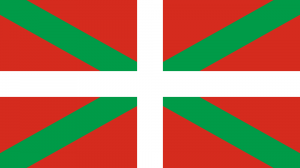Language/Basque/Grammar/Basic-elements-of-the-sentence
Kaixo, Basque Learners! 😃
➡ In today's lesson you will learn the basic elements that make up a sentence in the Basque language.
Happy learning!
A declarative sentence in Euskara contains:
- a verb and its arguments,
- an aspect marker attached to the verb,
- the verbal inflection, which contains the agreement morphemes, tense, and modality.
It can also contain other phrases, such as adverbials or postpositional phrases.
1. Examples
a
- umea kalean erori da
child-the street-in fall-asp is
'the child fell in the street'
Here is a sentence constructed with the intransitive verb erori 'fall'. The verb is marked for perfective aspect with the morpheme i; it denotes a completed event. The auxiliary verb is da, a form of izan 'be', which is inflected for present tense, third person singular. The subject umea 'the child' is marked with absolutive case, which bears a zero morpheme, that is, no manifest ending for the case. There is also a locative postpositional phrase kalean 'in the street'. The word order is said to be neutral, that is, the sentence is a natural answer to a question such as zer gertatu da? 'what happened?'. In other words, the entire sentence is informationally relevant.
b
emakumeak gizona ikusi du
woman-the-E man-the seen has
'the woman has seen the man'
This sentence is constructed with a transitive verb, ikusi 'to see', which has the perfective aspectual morpheme i attached. The auxiliary verb is a form of ukan 'have', inflected for present tense, third person subject, and third person object. The subject emakumea 'the woman' is marked for ergative case (morpheme k), and the object gizona is case marked absolutive (morpheme zero). The word order is neutral.
c
gizonak umeari liburua eman dio
man-the-E child-the-D book-the given has
'the man has given the book to the child'
This sentence contains a transitive verb, eman 'give', which has a variant of the perfective aspectual morpheme, namely, the final -n on the verb. The auxiliary verb carries the inflection, which in this case is specified for present tense, third person object, third person dative and third person subject. The subject gizona is marked for ergative case (morpheme k), the dative phrase is marked for dative case (morpheme i) and the object is marked for absolutive case (morpheme zero). The word order is neutral.
Sources
https://www.ehu.eus/documents/2430735/0/A-brief-grammar-of-euskara.pdf

